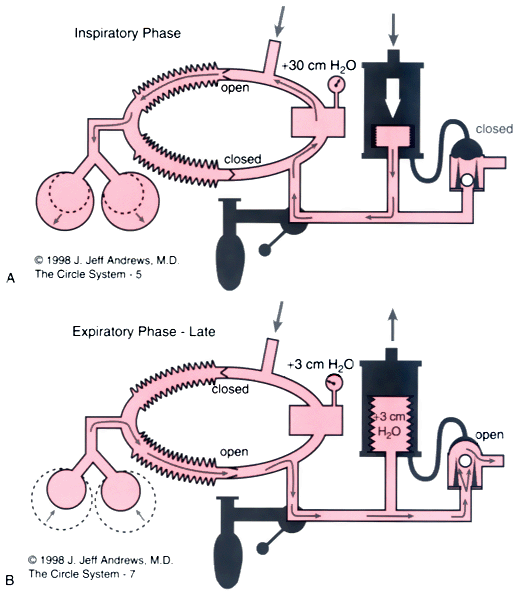 |
 |
Figure 9-24
Inspiratory (A) and expiratory
(B) phases of gas flow in a traditional circle system
with an ascending bellows anesthesia ventilator. The bellows physically separates
the driving-gas circuit from the patient's gas circuit. The driving-gas circuit
is located outside the bellows, and the patient's gas circuit is inside the bellows.
During the inspiratory phase (A), the driving gas
enters the bellows chamber, causing the pressure within it to increase. This causes
the ventilator's relief valve to close, preventing anesthetic gas from escaping into
the scavenging system, and the bellows to compress, delivering the anesthetic gas
within the bellows to the patient's lungs. During the expiratory phase (B),
the driving gas exits the bellows chamber. The pressure within the bellows chamber
and the pilot line declines to zero, causing the mushroom portion of the ventilator's
relief valve to open. Gas exhaled by the patient fills the bellows before any scavenging
occurs because a weighted ball is incorporated into the base of the ventilator's
relief valve. Scavenging happens only during the expiratory phase, because the ventilator's
relief valve is open only during expiration. (Adapted from Andrews JJ:
The Circle System. A Collection of 30 Color Illustrations. Washington, DC, Library
of Congress, 1998.)

 |
